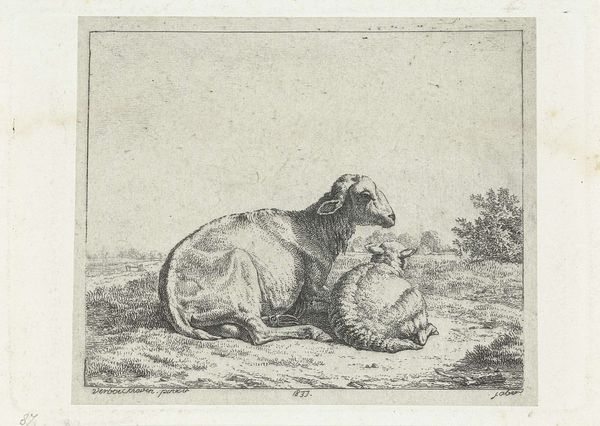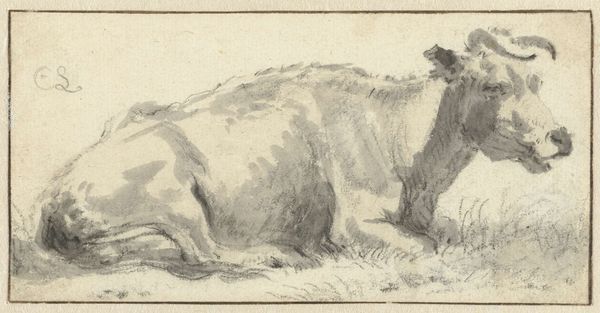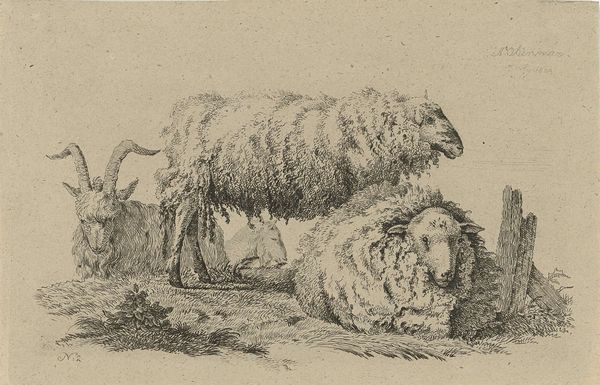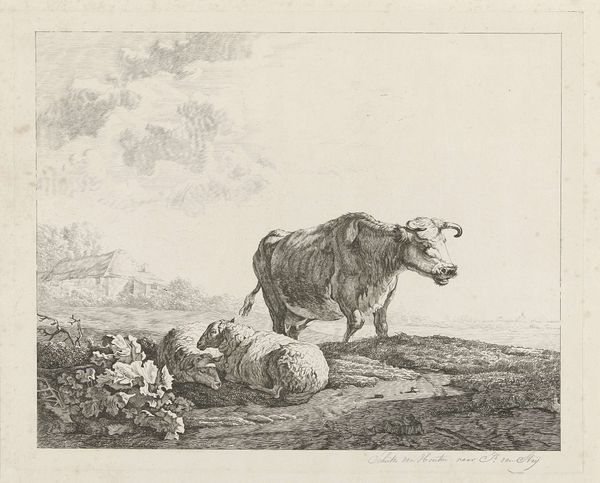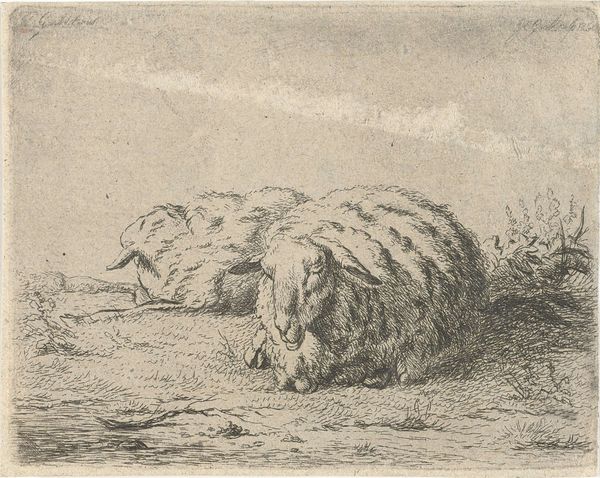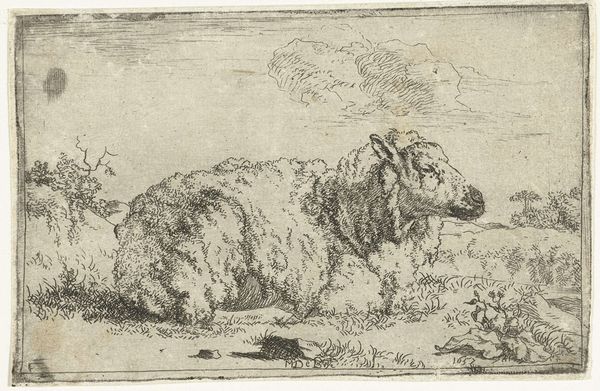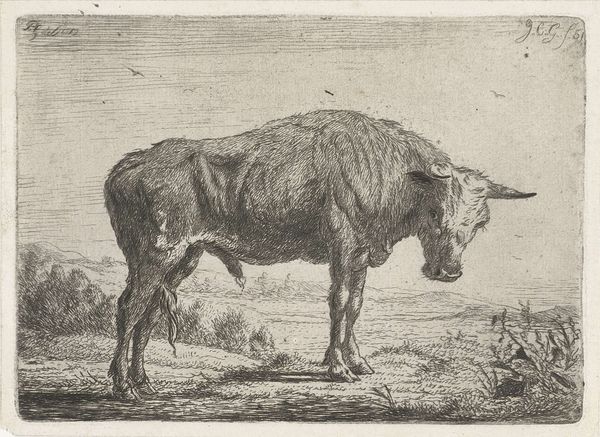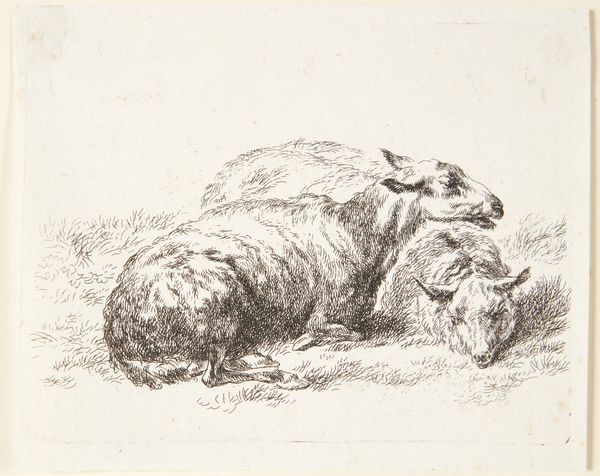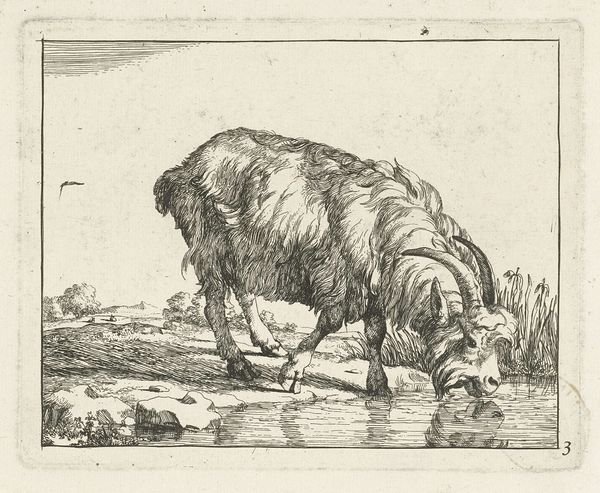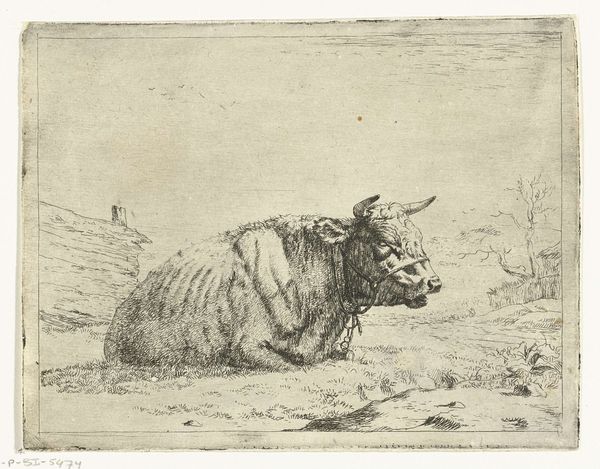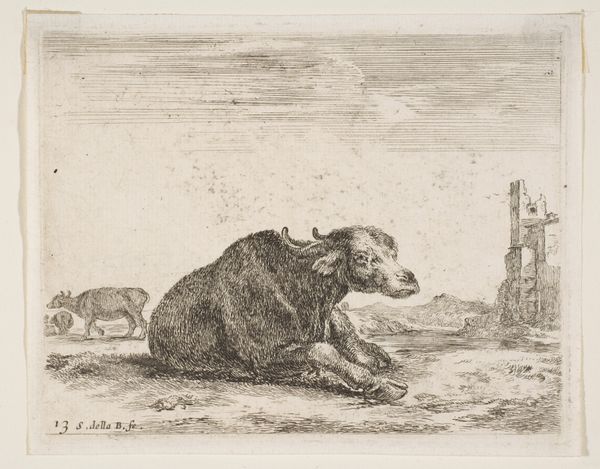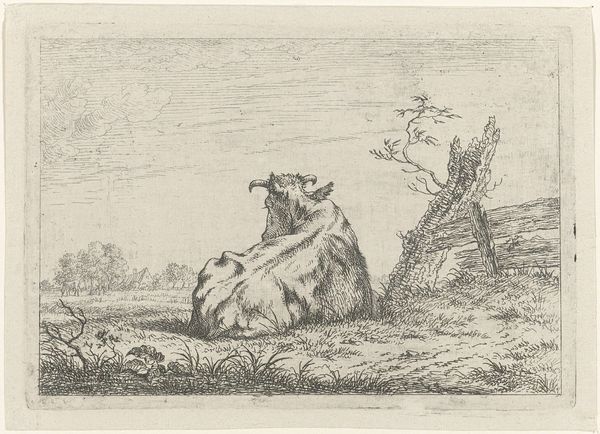
painting, oil-paint
#
portrait
#
animal
#
painting
#
oil-paint
#
landscape
#
oil painting
#
romanticism
#
animal portrait
#
painting painterly
#
genre-painting
#
realism
Copyright: Public Domain: Artvee
Editor: So here we have "Gloucestershire Old Spot," painted between 1800 and 1805 by James Ward, using oil paint. It’s... well, it’s a very large pig. What can we say about that? What do you see here? Curator: This piece, on its surface, presents a straightforward portrait of a prized animal, but consider the economic forces at play. The painting meticulously depicts the Gloucestershire Old Spot breed. Its monumental scale implies the breed's economic value. Think of it as agricultural propaganda. Editor: Propaganda for a pig? That's unexpected! Curator: Not exactly in the modern sense, but consider the historical context. Early 19th century Britain was heavily invested in agriculture and livestock breeding. This wasn't just about showing a pretty picture. It’s about showcasing a productive, profitable commodity. How does the material – oil paint – contribute to that end? Editor: Hmm, the texture does give it a sort of… solidity. Like you could almost feel the weight of the animal. Is that intentional? Curator: Absolutely. The choice of oil paint allows Ward to depict the animal with almost hyper-realistic detail. The sheen suggests health and prosperity. Even the landscape behind it serves a purpose – setting the scene for England’s agricultural success and labor division. Editor: It’s amazing how much is communicated through the pig, its landscape, and the painting medium itself! Curator: Precisely! We are able to understand agricultural ideals and how labor shaped even "high art." It forces us to consider what is being consumed here beyond aesthetics. Editor: I will never look at a farm animal painting the same way. Curator: Art reveals societal production!
Comments
No comments
Be the first to comment and join the conversation on the ultimate creative platform.


